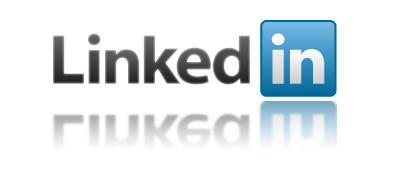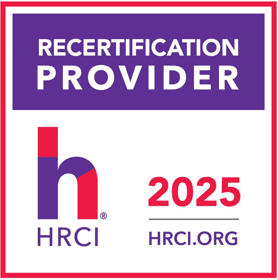The Board of Directors of any organization is responsible for protecting the interests of the investors, shareholders, customers and employees. The Board must be forward-looking at all times, working to ensure the long-term sustainability and success of the organization. The Board is responsible for overseeing the strategy, for reducing business risks and expenditures, and for identifying opportunities for the organization at all times.
To achieve these goals, the Board of Directors will routinely review the organization’s strategic goals, budget, financial performance, market opportunities, etc. But what is the Board’s responsibility to review
the Talent Benchstrength of the organization—the talent strengths and the talent risks that could either serve as drivers or restrainers of business success?
This article explores questions that every Board of Directors should ask their executive team and human resource professionals to provide about the talent needs, risks and recommendations.
The Board is Responsible for Strategic Planning
While the leadership team of the organization is responsible for the strategy and goals of the organization, the Board is responsible for overseeing this strategy and for ensuring the company is moving in the right direction. Therefore, every board should be asking these questions to ensure the company is retaining, hiring and developing the talent needed to achieve the company’s goals:
- Who are the key leaders who will be leading each of our strategic goals?
- What personal strengths can these key leaders leverage to help us achieve our goals?
- What personal weaknesses do these leaders demonstrate that could potentially reduce our organizational success, and what actions is each executive taking to compensate for these weaknesses (such as hiring talent with strengths that compensate for the leader’s weakness).
- Do we need to make any internal talent changes to support the strategic goals? Do we need to hire any new external talent to support the strategic goals?
- What are the overall leadership strengths of our organization? What are the overall leadership development needs in our organization and how are we addressing these development needs?
- What workforce planning is taking place in the organization to ensure we have the talent we need to achieve each goal?
- What are the most critical positions in the organization? What criteria have we used to identify these critical positions?
- What are we doing to ensure we have our top talent in these critical positions to achieve our goals?
- What are we doing to retain and reward our top talent?
- Do we need to review our relocation strategy and compensation package to encourage leaders to take on positions in different regions and/or different countries?
- Are we encouraging employees to take on lateral moves that will develop their competencies and their overall understanding of the organization?
- Who are the key experts in our organization with a distinguished and unique level of expertise that cannot be replaced? What are we doing to retain these key experts and to encourage them to teach and mentor others in the organization?
The Board is Responsible for Identifying and Mitigating Business Risks
One of the roles of the Board of Directors is to identify risks and to work with the leadership team to form mitigation plans to reduce organizational risks.
Therefore, every Board should ask questions to identify the talent risks in the organization:
- What is our Talent BenchstrengthTM and Succession Planning strategy? What tools and processes do we use to identify and develop top talent and successors?
- What is our talent and performance management calendar of events?
- What results have we achieved from our talent management and performance management strategies?
- What percentage of our leadership team will be eligible to retire in the next three years? What is our proactive strategy to ensure strong business continuation as key leaders retire?
- What is the emergency plan for each of our senior leaders, in the event that the leader has a short-term, long-term or permanent departure from the company? What is the emergency plan to cover each leader’s responsibilities during the time-to-fill period for that position, if that position becomes vacant?
- What percentage of our senior leadership team and our executive team has at least one fully qualified successor?
- What are the Talent Profiles (experience, education, languages, strengths, development areas, etc.) of our top executive successor candidates?
- What are the strengths of our top executive successor candidates? What qualification gaps exist in our executive successor candidates and how are we addressing these knowledge and skill gaps to increase their readiness for their next position in the organization?
- Who are Key Experts in our company with critical knowledge that is required to achieve our goals? Do we need or have a process in place to identify and to retain these Key Experts?
- What are we doing to retain our Key Experts?
- Do we have succession plans in place for our Key Experts, even if they are not in leadership positions?
- Are our Key Experts documenting their knowledge, skills and procedures for others to follow in the organization?
- Do we have a process in place to identify the high potentials leaders who are currently operating at a peak ability and aspiration point in their career? What are we doing to retain and to develop our high potential talent?
- What are our most critical talent risks, and what are we doing to mitigate these risks?
- What is the talent outlook in the future for our industry? Is there an expectation of a talent shortage or abundant talent for the positions we need today and for the future? What sources and research are we using to determine the answers to these questions?
- What employee engagement surveys or research have we done in the organization? What strengths and risks were identified through these processes and what actions are we taking to address the risks?
- What percentage of our talent is new to the organization (typically less than one year in position)? What is our new employee and new leadership onboarding and/or transition process?
- What percentage of our talent is not performing at expected levels, and what are we doing to address these performance risk issues?
The Board is Responsible for Monitoring Expenses
Another objective of the Board is to monitor business expenses, cash flow and available capital. To that end, every Board should ask these questions to ensure talent and development dollars are spent wisely:
- What is our annual cost of recruiting external talent into the organization? How does this dollar amount compare to the costs of developing our internal employees for specific future positions? Are we spending more on external talent searches or internal talent development?
- What is our organization’s annual employee turnover, and how does our turnover compare to industry standards? What is our turnover of employees specifically in leadership positions in our company? What is this costing us?
- How much did we spend last year on executive search fees? How much did we spend on hiring bonuses for leadership and executive positions? When we filled leadership positions last year with external candidates and incurred external recruiting costs, did we also interview and consider any internal candidates for the positions? Why or why not? Were there any successor candidates identified for the roles that we ended up filling with an external candidate?
- What business value and/or return-on-investment have we achieved so far because we are identifying and developing successors? How many successors have moved into the roles we identified for them?
- What percentage of our open leadership positions are we filling with external candidates, and what percentage of open leadership positions are filled with internal candidates?
- What is our ratio of managers to employees, and how does this ratio compare to an industry standard? Do we have too many managers compared to our employee population? Or, could our employees be more productive with more leadership coaching and attention?
- What is our budget for overall employee development, for leadership development, for successor development for executive development and for high potential talent development? What results have we seen from our development investments?
Talent Benchstrength planning should be a standard agenda item at each Board meeting. The company’s annual report should also include talent benchstrength information—talent changes, talent numbers, talent strengths and talent risks.
Board members should request to be updated on any significant expected or actual talent changes in the organization that could affect organizational results, stock market valuation and employee morale.
Board members should expect their Human Resource leadership team to be able to provide the answers to these questions. Additionally, the Board should expect their business leaders and HR leaders to conduct regular talent review meetings, to monitor workforce planning needs carefully, and to build an active succession planning and development process to increase internal successor readiness.
And to achieve these expectations, the Board of Directors and the executive team must ensure that the HR executive has the authority, the information, the support, the time and the resources needed to address each of these strategic talent issues thoroughly.
To achieve sustained organizational success, each company must 1) continue to provide products and services of value, 2) ensure the organization has the capital and cash flow required to achieve the business goals, and 3) ensure the organization hires, retains and develops the right talent to achieve the goals. Every Board of Directors should ensure they have the information they need in each of these three categories to protect the interests of the company owners, investors, shareholders, stockholders, employees, customers and communities that depend on the vitality of the organization.




